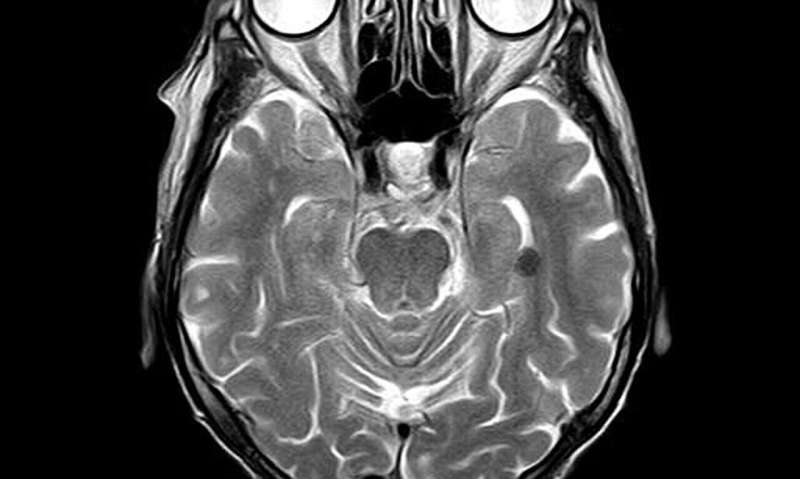
Lack of oxygen and specific changes in the microvascular architecture are often undetected and comprise early indications of the return of a brain tumor following previous surgical intervention. This was the result of a study published by an Austrian and German team headed by Karl Landsteiner University of Health Sciences in Krems. The findings showed that initial signs of a recurrence of glioblastomas could be detected more than six months earlier than otherwise possible using standard clinical methods. Published in Clinical Cancer Research, the study was based on retrospective analysis of special MRI data from 56 patients.
Glioblastoma is a form of malignant brain tumor with diffuse infiltration into the adjacent brain tissue. This characteristic makes tumor removal especially difficult, meaning that supplementary treatments such as chemotherapy and radiotherapy are also required. Nonetheless, in the vast majority of cases, the tumors return within a short period. Diagnosing recurrence at a very early stage is difficult but crucial, given the decisive role it plays in determining the patient’s life expectancy. A newly published study from Karl Landsteiner University of Health Sciences in Krems reports new insights that could potentially pave the way for earlier diagnosis and personalized therapy.
190 days earlier: novel evidence of a recurring tumor
Scientists led by Prof. Andreas Stadlbauer, a researcher from the Institute of Medical Radiology at St. Pölten University Hospital (KL Krems), were able to detect very early and clear indications of recurrence of tumors. “We were able to identify a change in the vascular architecture where the brain tumor would eventually recur fully 190 days before a conventional MRI diagnosis could be made,” he said, outlining the key finding of the study.
From a technical perspective, this was made possible by measuring biomarkers for certain physiological values in the brain tissue using MRI. Stadlbauer said, “We looked at earlier MRI scans from patients who we knew had had a recurrence of the glioblastoma later on. In the areas of the brain where this was observed, we noticed changes in the physiological biomarkers over a period of a year before the tumor recurred and were able to identify characteristic patterns.”
These patterns included a decrease in vessel density in the brain tissue, which was reflected in reduced blood supply, fully 190 days prior to the radiological diagnosis. Increasing lack of oxygen (hypoxia), which could also be measured using MRI, was also among the changes noted. This led to formation of tiny vessels and an increase in vessel density 120 days before the radiological diagnosis. A month later, this led to an increase in oxygen supply.
“We observed two different phases in the manifestation of a recurrent glioblastoma,” said Stadlbauer. “Infiltrating tumor cells that cannot be killed during preliminary treatment recruit existing microvessels to ensure their own supply, but end up weakening and destroying them. This was the process that we observed in the form of decreased vessel density. The related decline in oxygen supply and the resulting tissue hypoxia triggers formation of microvessels, which—with a delay of 30 days—is seen in the restoration of blood supply and improved oxygen and nutrient supply thatplays a decisive role in aggressive tumor growth.”
Source: Read Full Article